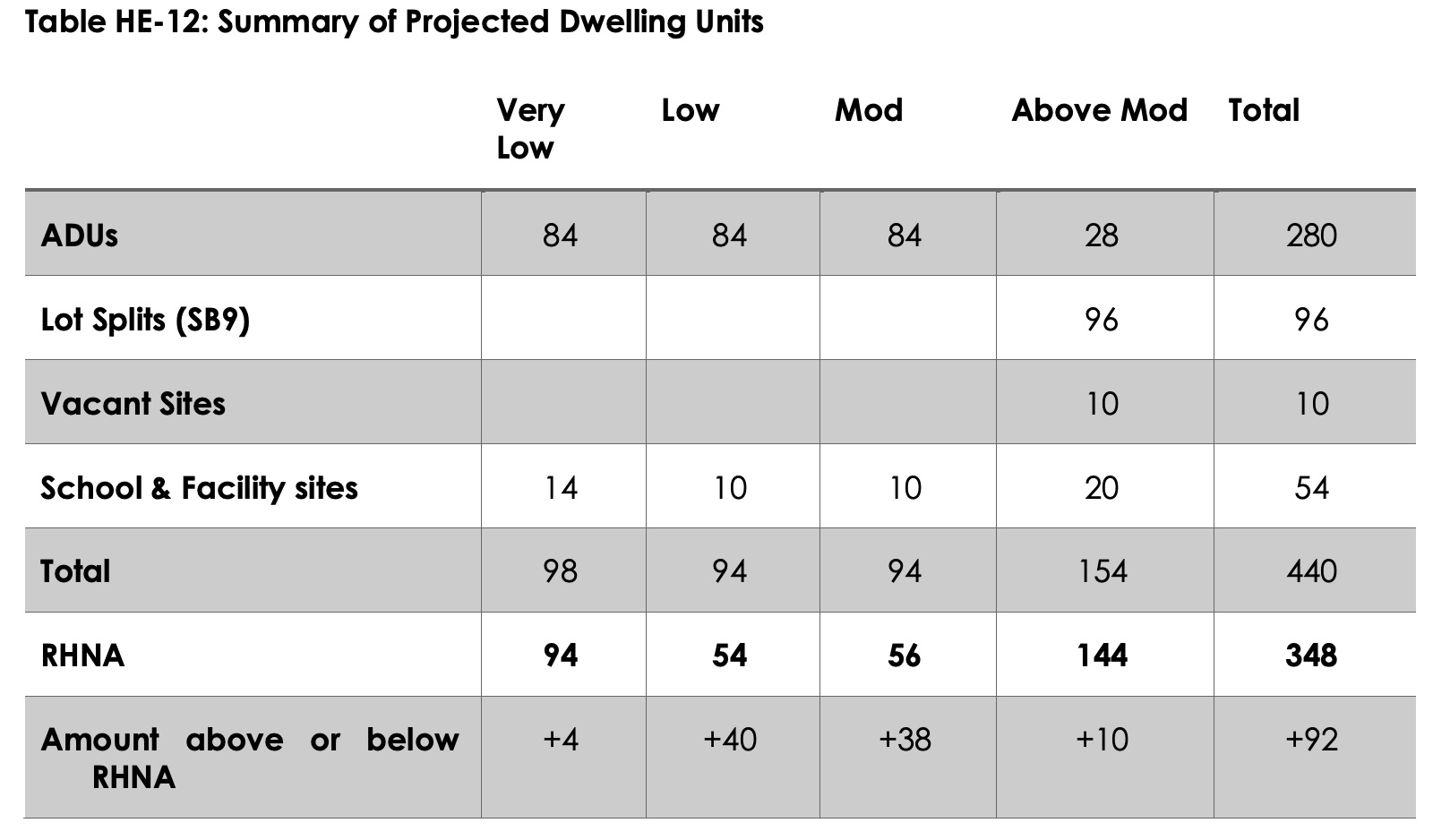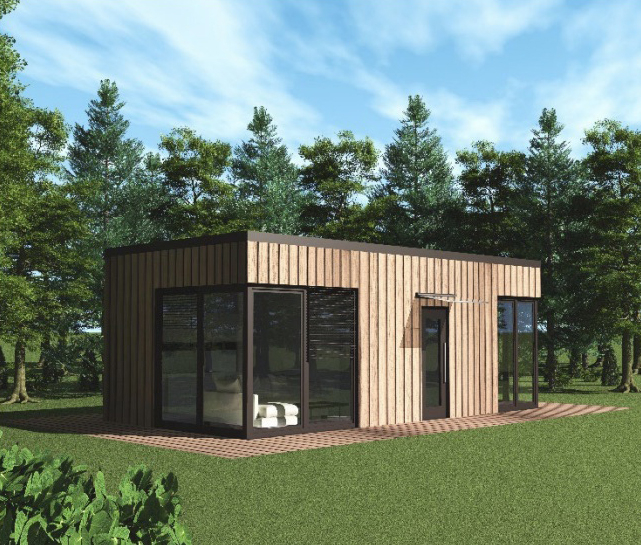Atherton is joining Woodside in receiving extensive feedback from the state on its proposed housing element.
In a 16-page letter sent to the town on Monday, Oct. 31, the state Department of Housing and Community Development (HCD) notes that the town is overestimating how many Accessory Dwelling Units (ADUs) and duplexes it will help produce over the next eight years. It also cast doubt on the idea that housing will be built on school properties the town included during the last housing element cycle. The state, as it did for Woodside's plan, asks Atherton for more details and analysis across the entire plan.
"The draft element addresses many statutory requirements; however, revisions will need to be necessary to comply with state housing element law," the letter states.
Atherton officials intend to prove that "production of 35 units per year is achievable."
"The town received preliminary comments from HCD a couple of weeks ago," said City Manager George Rodericks in an email. "This formal letter echoes and expands on those comments. It is clear that there is still a lot of work to do as we move toward a housing element that the state will certify. A certified housing element is in the best interest of the town and to reach that, we need the active engagement of the community working toward solutions."
Mayor Rick DeGolia said in an email that the HCD letter requires a great deal more analysis than the town's planning consultants previously provided.
"We will definitely provide all of the analysis that is required," he said, noting that he needs to review the policy assumptions and positions that HCD is asserting and that will require a careful read of the letter.
But local housing advocates say the town isn't doing enough to meet its state mandated housing goals though.
Atherton's plan includes 440 new housing units, which adds a buffer above and beyond the 348 units the town is required to plan for as part of the 2023-31 Regional Housing Needs Allocation (RHNA). It is a significant jump from the requirement to plan for 93 units during the last eight-year cycle.
The draft was submitted to the state on Aug. 2. HCD had 90 days to offer feedback. A compliant draft of the housing element has to be approved by the town by Jan. 31, 2023. Cities and towns that don't adopt a compliant housing element by that deadline could face legal repercussions and stiff fines, state officials have said.
Without a compliant element, the town could face the so-called builder's remedy in the city, which allows for residential projects to move forward even if they do not comply with local development standards. This occurred in Santa Monica, during which time 16 projects and 4,562 units were proposed, according to the Santa Monica Daily Press.
In order to meet the January deadline, the town would need to submit a compliant draft by the end of November to give HCD 60 days to review the next draft.
ADUs, SB 9 units
The town element banks on more ADUs. Some 280 of the 440 proposed units are ADUs.
Town officials believe that if HCD uses 2019 to 2022 data versus 2018 to 2021, it will provide a more realistic estimate of how many ADUs the town can realistically plan for, Rodericks said.
By using this other data set, the town's average ADU production "will be considerably higher," Rodericks said.
"We fundamentally believe that production of 35 units per year is achievable," he said.
The HCD letter assumes that Atherton can only qualify 18 ADUs a year because HCD uses a default calculation which is the average number of permitted ADUs over the past four years, DeGolia said. However, the laws changed in 2020 and Atherton created a huge incentive, which is that 100% of ADU square footage no longer counts against the maximum allowed square footage on a property, so we saw a significant increase in permitted ADUs.
"We have the evidence to show that residents will build at least 35 ADUs a year which should overcome the far more limited default calculations that HCD uses," he said.
To support SB 9 lot split assumptions, the analysis must include experience, trends and market conditions that allow lot splits and missing middle uses, the letter states.
"The analysis must list the potential SB 9 sites and demonstrate the likelihood of redevelopment, including whether existing uses constitute as an impediment for additional residential use," it states. "The analysis should describe how the town determined eligible properties, whether the assumed lots will have turnover, if the properties are easy to subdivide, and the condition of the existing structures."
The element must analyze and demonstrate realistic opportunities for multifamily and analyze the conditional use permit requirement in town for multifamily as a potential constraint on housing supply and affordability, according to the state.
Errors in state data
Town officials say that HCD's calculations around the number of ADUs that the town actually produced during previous reporting cycles is not accurate.
"During our conversations with HCD they noted that if there were errors in their annual report calculations that the town could submit corrections," Rodericks said. "We intend to do so."
Council members have also said that HCD's demographic records provide an inaccurate idea of how many units the town should be required to build for. Atherton officials say that the state has therefore assigned housing quotas that aren't realistic.
In July, Council member Bob Polito called the numbers "mind-boggling." For example, he said he found the projected 2,700 employees in town seemed dramatically high. Vice Mayor Bill Widmer agreed.
Housing advocates react to the letter
Keith Diggs, a housing elements advocacy manager for YIMBY Law, a group that helps enforce state housing laws, said the town's "defensive" cover letter to the state "says everything you need to know." Atherton is all-in on being "different" and "exclusive," he said, pulling language from Atherton's draft element's cover letter.
"They (Atherton) complain about the secondary issue of eschewing HUD (U.S. Department of Housing and Urban Development) grants for affordable housing, when the real issue is that they make it illegal to build the kind of missing-middle housing that's necessary to end the housing crisis," Diggs said in an email. "I just don't buy their myth that there's 'little vacant developable land' in Atherton. There's plenty of vacant land; the town is choosing not to let its residents build on their vacant land."
DeGolia and others have pointed to the high cost of land in town, about $8 million per acre, as a barrier for building affordable housing in town.
Jeremy Levine, a policy manager for the housing advocacy group the Housing Leadership Council, said in an email that similar to Woodside, the feasibility of affordable housing in Atherton is almost entirely a question of political will. There are two strategies for building affordable housing in Atherton, he said:
• Allowing higher-density market-rate multifamily development and require a component (typically 15%) to be affordable to lower-income households. The high rate of return of market rate housing in Atherton can more than offset an inclusionary component in a project of 20 units or more, he said.
• Allowing higher-density affordable multifamily development with extra incentives for 100% affordable housing developers, which must include some combination of land dedication or subsidy, and favorable development standards.
Atherton may not have much land to dedicate, but the town could raise revenue for subsidies a number of ways. Policy tools such as an affordable housing overlay can allow higher densities and other relaxed development standards exclusively for affordable housing developers, which makes it possible for nonprofit developers to compete with market-rate developers for the same land. Other incentives can include fee waivers, expedited permit processing, and more.
"I think some Atherton leaders genuinely believe that ADUs are the only realistic way to build affordable housing in Atherton because of high land costs," he said. "However, land is a relatively small proportion of total development costs, and there are many tools Atherton can use to make affordable homes pencil (out)."
Levine said Atherton's one-acre minimum lot size creates a de facto "mansion only" policy, which the housing element does nothing to address.
"The invisible wall to affordable housing erected by Atherton's exclusionary zoning exists entirely at the discretion of the town, and it is the town's responsibility as a part of the California community to tear its self-imposed barriers down," he said. "When there are more units in a project, the cost of land per unit becomes pretty small compared to other costs. For single-family development, the cost of land is typically a far larger share of the total cost of development than for multifamily."
Other feedback
The state letter notes that Atherton's plan identifies multiple sites, including the public facilities and school districts, Menlo School, Menlo College and the Cal Water Bear Gulch Reservoir, for development. It must include additional discussion on each of these sites identified to accommodate the RHNA in its plan, state officials say.
"We also believe that there are significant opportunities for staff housing at the schools and HCD rejects that because Atherton used school housing in the last housing element and it didn't get built," Mayor DeGolia said. "Nevertheless, times have changed and school staff housing is now critical, so we think that we can show that it will get built."
While the element includes a general summary of the public participation process, the element should also demonstrate efforts were made to involve all economic segments of the community in the development of the element, according to the letter.
The element could describe the efforts to circulate the housing element among low- and moderate-income households and organizations that represent them and to involve them in the element throughout the process. In addition, the element should summarize the public comments and describe how they were considered and incorporated, the letter states.
The plan fails to address the state requirement to establish the number of housing units, by income level, that can be constructed, rehabilitated and conserved over a five-year time frame, officials say.
Check back for our update from a Wednesday, Nov. 2, City Council meeting in which the council was asked to provide direction to staff on how to respond to HCD's comments.
Read the full letter to Atherton here.






Comments
Registered user
Atherton: West of Alameda
on Nov 3, 2022 at 4:28 pm
Registered user
on Nov 3, 2022 at 4:28 pm
There are a number of comments that community involvement is necessary to address the State requirements for more housing in Atherton. One substantial barrier to greater community involvement is that the zoom meetings don't have the sound quality for participation of people not present in the Town Hall. I have tried to attend two meetings, but couldn't hear the comments and questions of people not on microphones. The people who responded did not bother to repeat the comments or questions for those not in the room. There is no community awareness, so it's not surprising there is next to no community participation. This doesn't bode well for participation needed to come to solid solutions to the housing mandate.